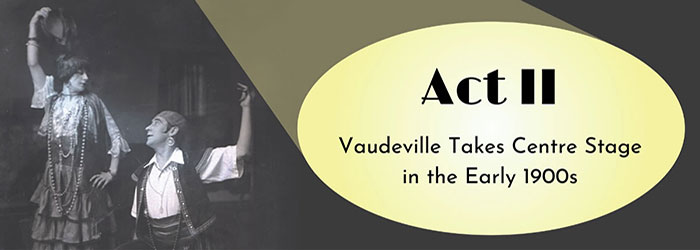
Previous | Exhibit Home | Next
In the decades before radio and television, vaudeville reigned supreme as the most popular form of entertainment in North America. Luxurious vaudeville theatres offered an affordable escape for Ontario’s working classes and growing middle class, and provided diverse entertainment ranging from variety sketches to comedy routines, short plays, songs, dances, acrobatics, magic shows, trained animal acts, and, eventually, some of the province’s first moving pictures.
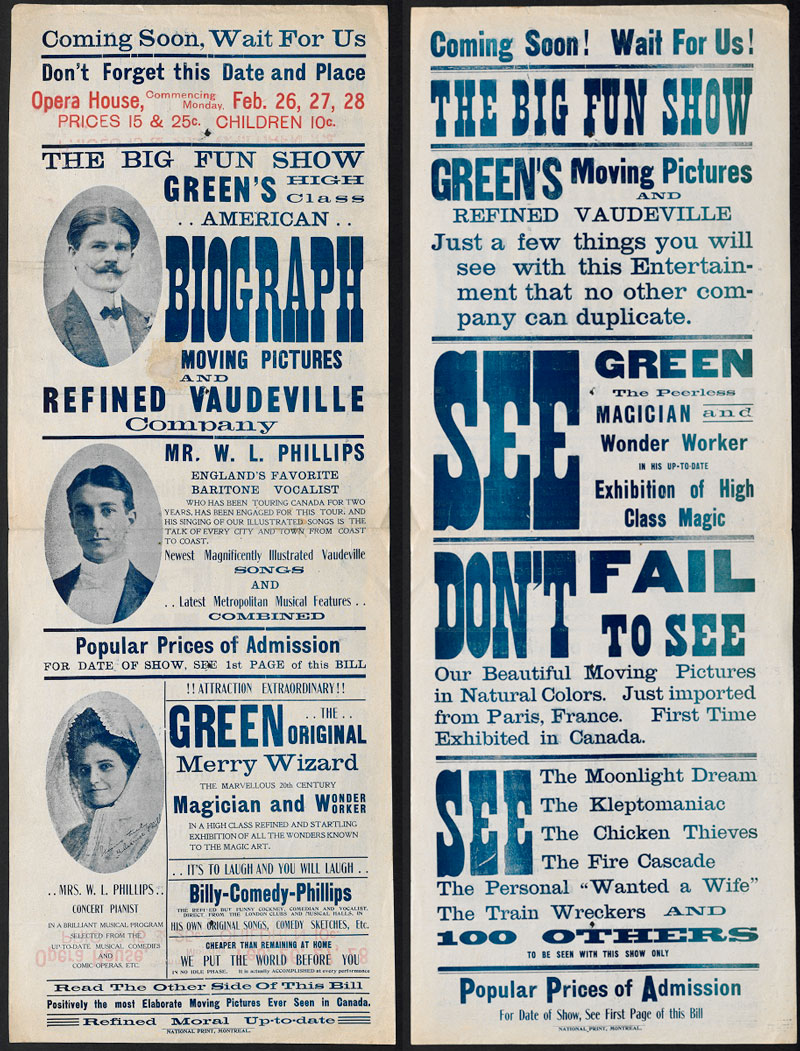
Click to see a larger image
Green's Moving Pictures and Refined Vaudeville advertisement, [1910-1930]
George Wilson and Sons Limited fonds
C 287-1-0-39.2
Archives of Ontario
I0074059 and I0074058
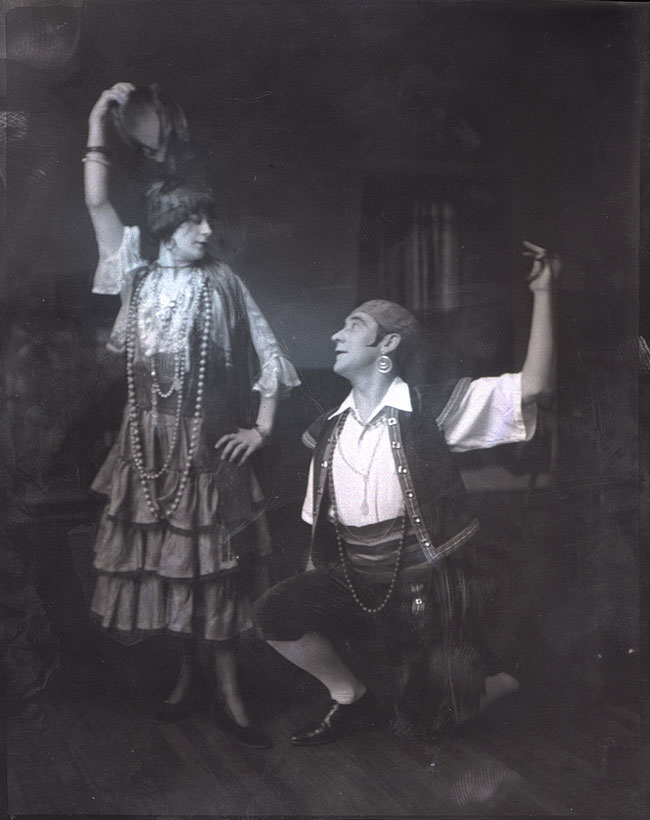
Click to see a larger image
Ernest Morgan and K. McCarthy acting out a scene in costume, February 8, 1925,
by M.O. Hammond
M.O. Hammond fonds
F 1075-13, H945
Archives of Ontario, I0001373
Ontario’s First Vaudeville Houses
When brothers Jerry and Michael Shea opened Shea’s Hippodrome in Toronto in 1914, the 3,200-seat venue was the largest vaudeville house in Canada and one of the largest in the world. It featured 12 grand opera boxes, an orchestra pit, decorative plaster moulding on the walls and ceiling, and—with the shift from gas lighting to electricity—hundreds of lights illuminating the space.
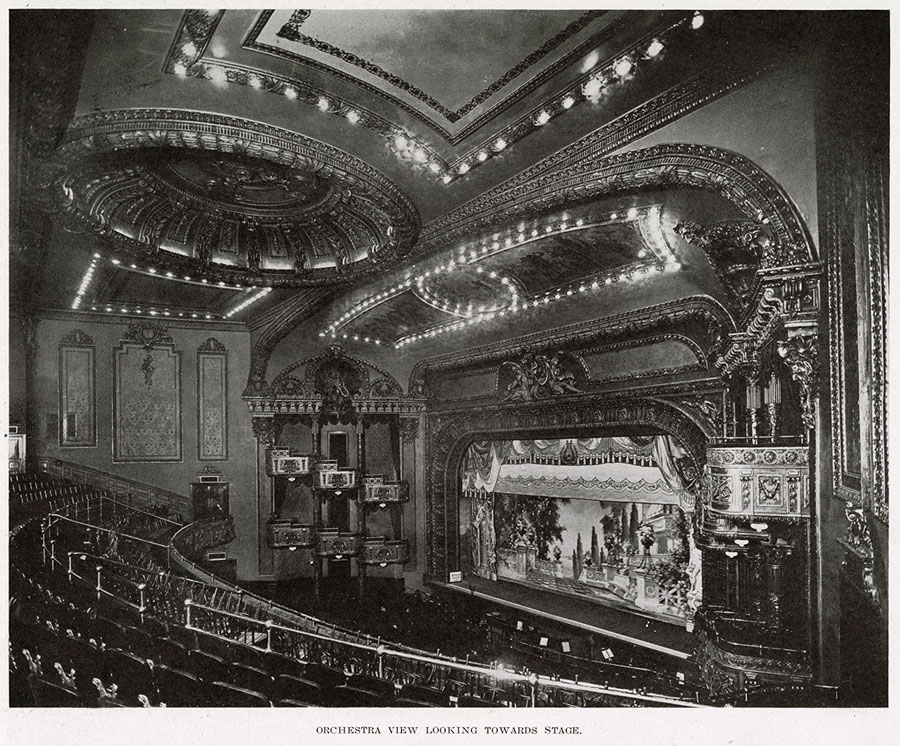
Click to see a larger image
Shea’s Hippodrome, orchestra view looking towards stage, in Construction: A Journal for the Architectural Engineering and Contracting Interests of Canada,
Vol. 8, No. 4 (April 1915), page 148.
Toronto Reference Library, Baillie Special Collections Centre, Arts Fo
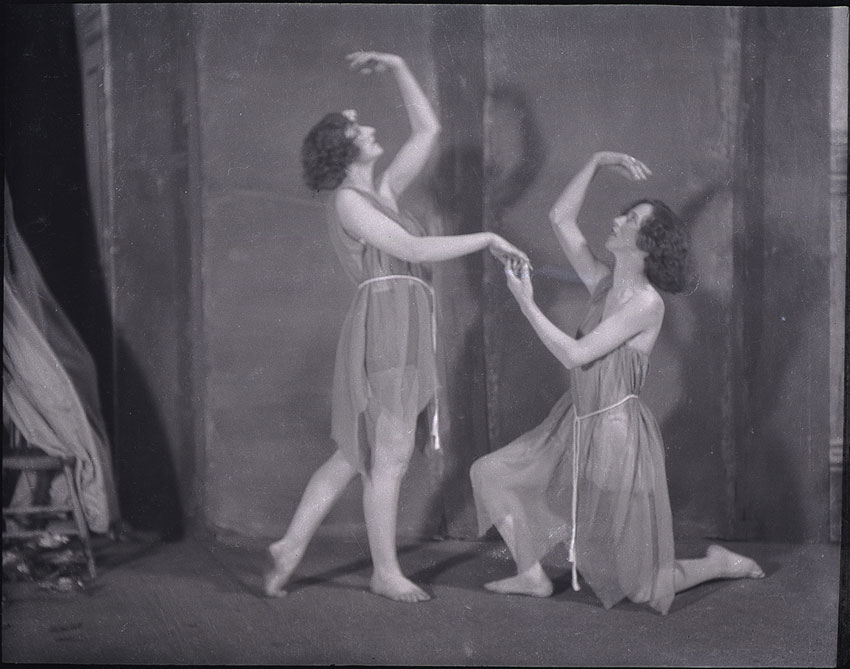
Click to see a larger image
Dancers at Hippodrome,
Toronto, April 1923, by M.O. Hammond
M.O. Hammond fonds
F 1075-13, H573
Archives of Ontario, I0001062
The construction of similarly grand theatres abounded province-wide during the early 1900s. From Hamilton to Sudbury to Chatham, vaudeville was the hottest thing in town.
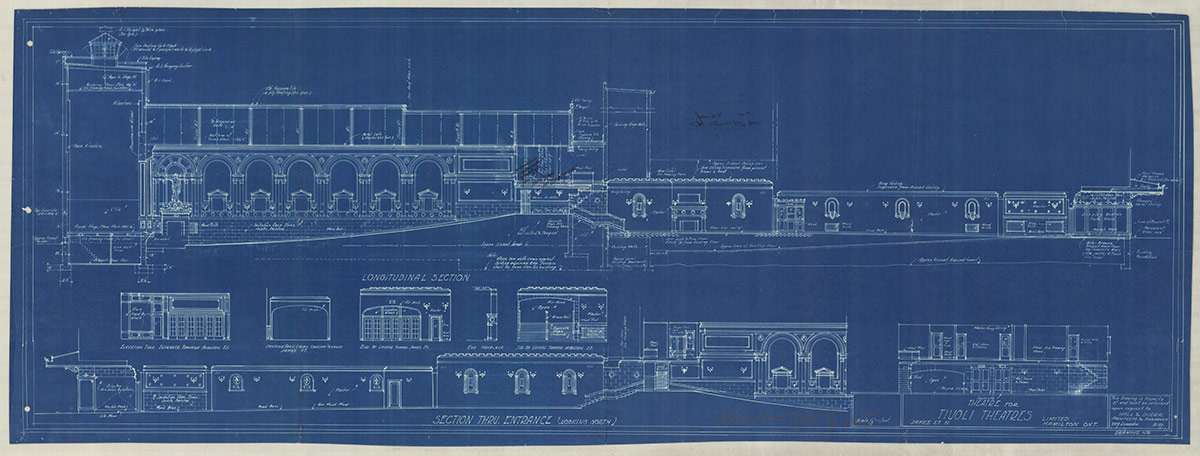
Click to see a larger image
Longitudinal section of the Tivoli Theatre, Hamilton, Ontario, [192-]
Theatre plans
RG 56-10
Archives of Ontario, I0056342
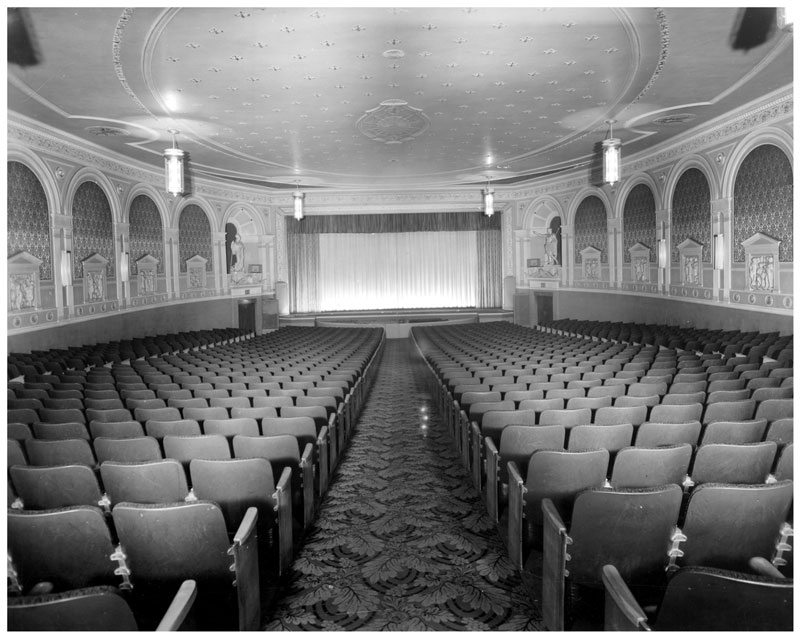
Click to see a larger image
Auditorium and stage of Tivoli Theatre, Hamilton, Ontario, November 17, 1944
Ontario Treasury Department, Motion Picture Censorship and Theatre Inspection Branch – Theatre photographs
RG 56-11-0-101-4
Archives of Ontario, I0011968
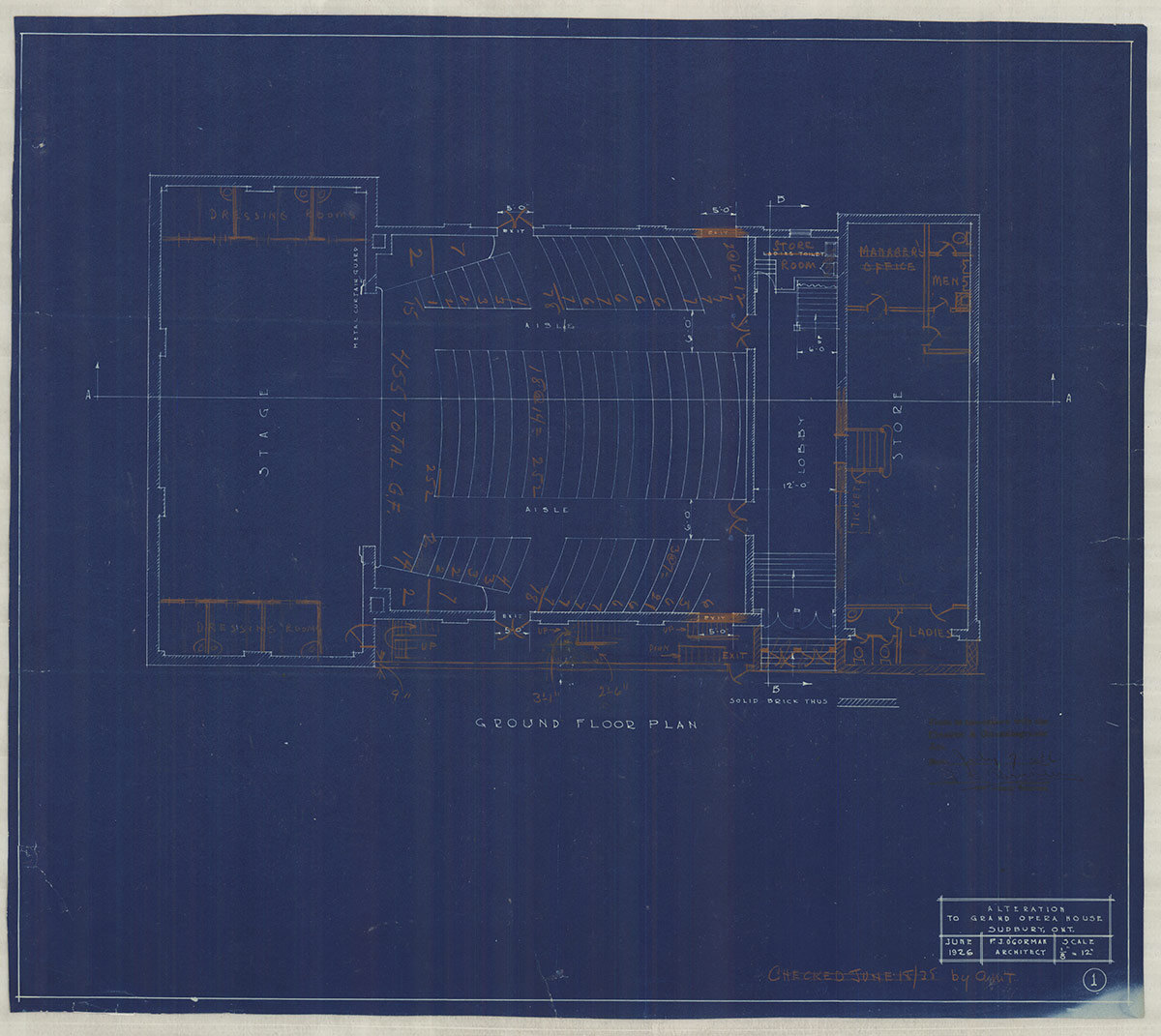
Click to see a larger image
Ground floor plan showing alterations to the Grand Opera House, Sudbury, Ontario,
June 1926
Theatre plans
RG 56-10
Archives of Ontario, I0056343
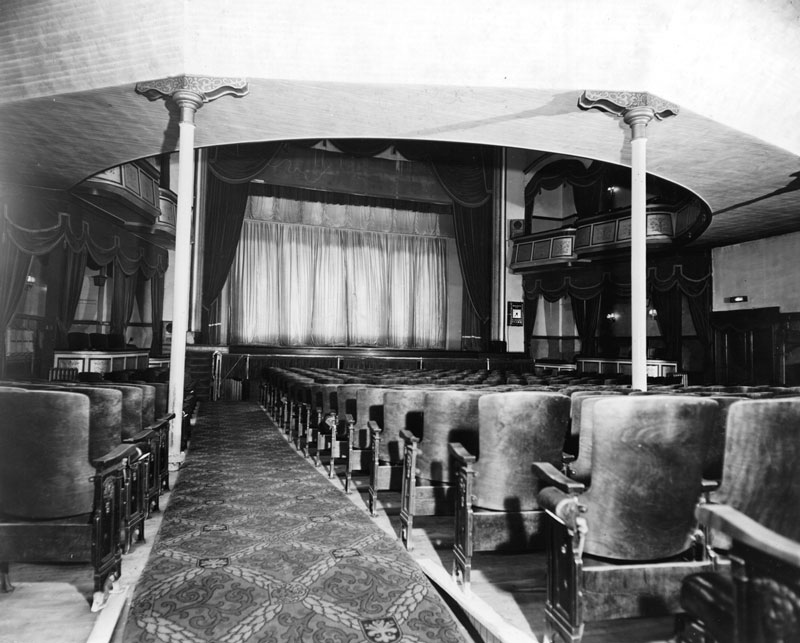
Click to see a larger image
View from back of theatre to stage of the Grand Theatre,
Sudbury, Ontario, 1941
Ontario Treasury Department, Motion Picture Censorship and Theatre Inspection Branch – Theatre photographs
RG 56-11-0-253-4
Archives of Ontario, I0012571
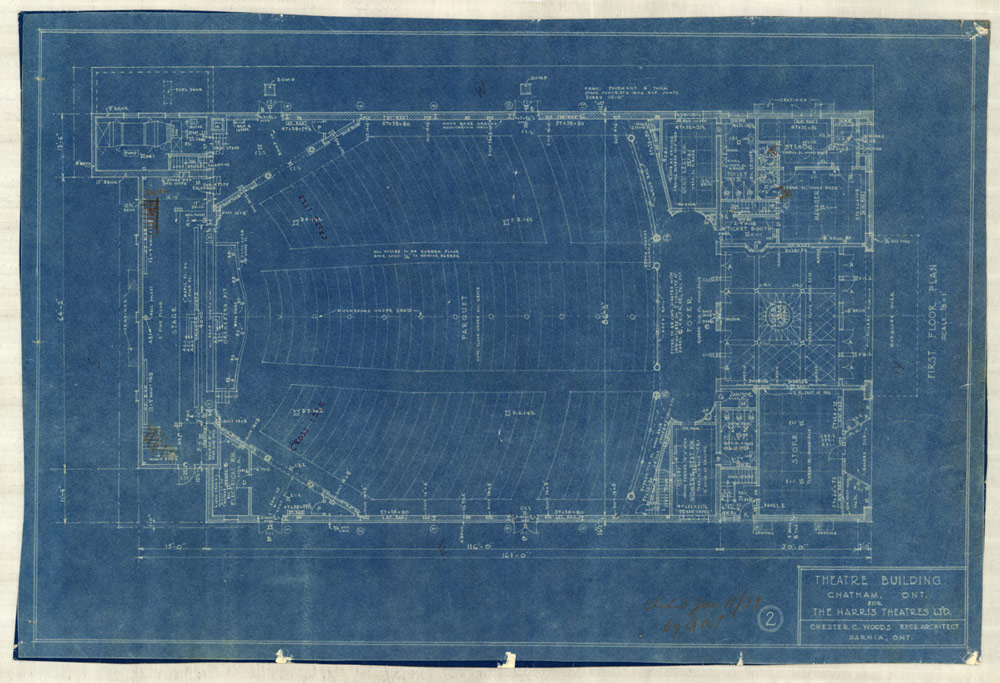
Click to see a larger image
First Floor Plan, Capitol Theatre,
Chatham, Ontario, [1929]
Theatre plans
RG 56-10
Archives of Ontario, I0056344
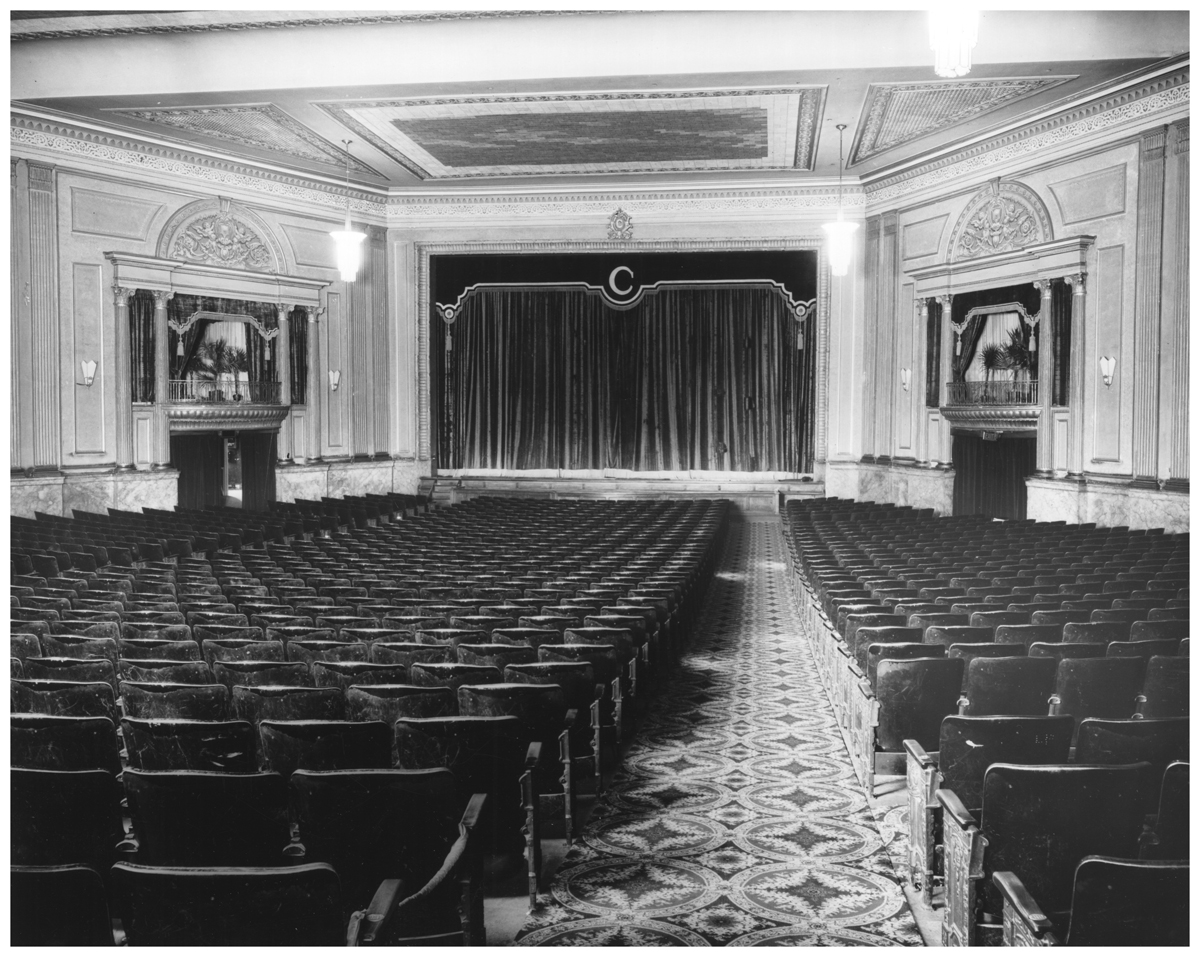
Click to see a larger image
Auditorium and stage at the Capitol Theatre, Chatham, Ontario,
October 22, 1947
Ontario Treasury Department, Motion Picture Censorship and Theatre Inspection Branch – Theatre photographs
RG 56-11-0-34-5
Archives of Ontario, I0011929
Ontarians on the International Stage: The Dumbells
The Dumbells were a group of soldiers-turned-entertainers who achieved international success as one of Canada’s most popular vaudeville acts after the First World War. The Plunkett brothers from Orillia, Ontario started the group in 1917 by performing amateur, impromptu shows at Canadian Army encampments while stationed in France. They developed their comic sketches and songs, initially intended to boost troop morale, into a variety show that toured across England, Canada, and the United States. The Dumbells’ widespread acclaim peaked in 1921 when their revue Biff, Bing, Bang became the first Canadian hit on Broadway.
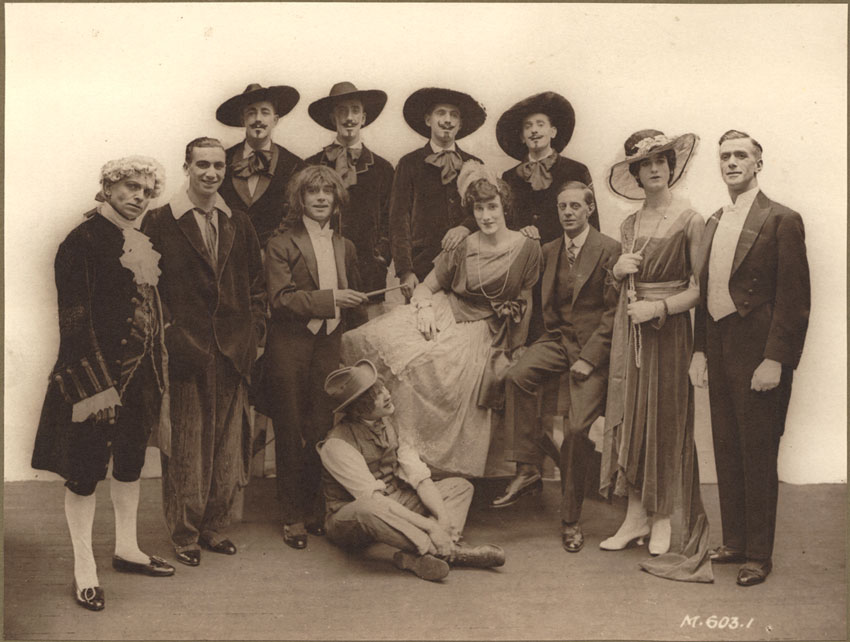
Click to see a larger image
The Dumbells acting group, [ca. 1918]
Canadian Expeditionary Force photograph albums
C 224-0-0-11-53
Archives of Ontario, I0004885
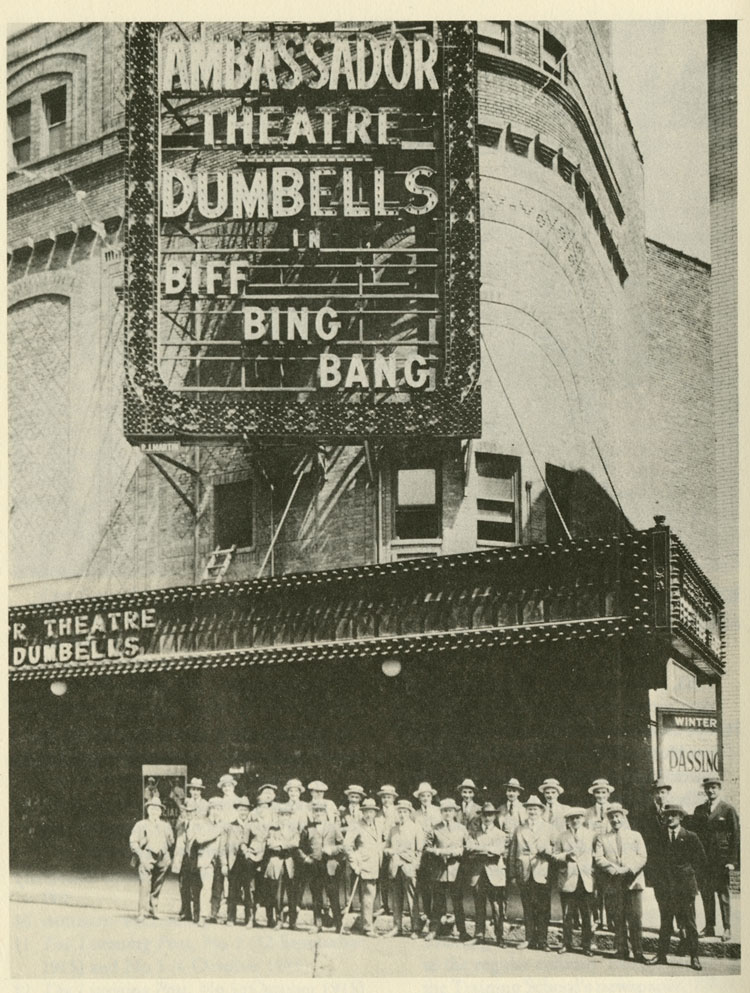
Click to see a larger image
The Dumbells troupe outside the Ambassador theatre in New York City, where their show Biff, Bing, Bang was a smash hit in 1921.
Photo from Patrick B. O’Neill, “The Canadian Concert Party in France,” Theatre History in Canada = Histoire du théâtre au Canada, Vol. 4, no. 2 (1983): 208.
Archives of Ontario Library Collection,
Period T, 1983 V. 4, N. 2
I0074038
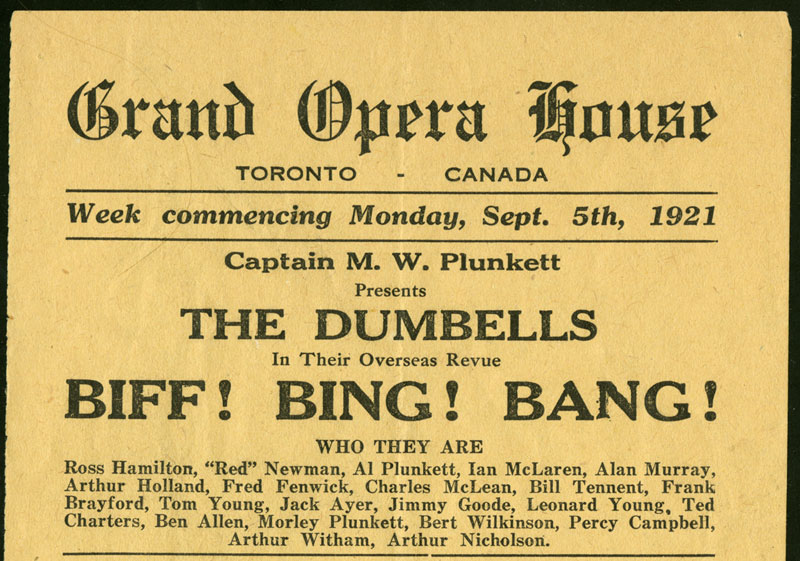
Click to see a larger image
Advertisement for The Dumbells’ overseas revue Biff! Bing! Bang! at the Grand Opera House, Toronto, Ontario,
September 5, 1921
Theatre programmes collection – Grand Opera House programmes
F 1064-0-0-3
Archives of Ontario, I0074044
Little but Mighty
The popularity of film and radio by the 1920s led to a decline in live theatre touring. Yet, hundreds of grassroots community theatres filled the void for live performance with the “Little Theatre” movement. These performances contrasted with the mass-produced, large-scale spectacles of European and American touring companies by cultivating Ontario’s local, amateur theatre scene.
The University of Toronto’s Hart House Theatre, envisioned as a student venue for Canadian experimental theatre, became the flagship of the Little Theatre movement. Although the theatre sat fewer than 500 people, it was one of the best-equipped venues for the dramatic arts when it opened in 1919. Today it continues to shape new generations of performers, stagehands, and audiences.
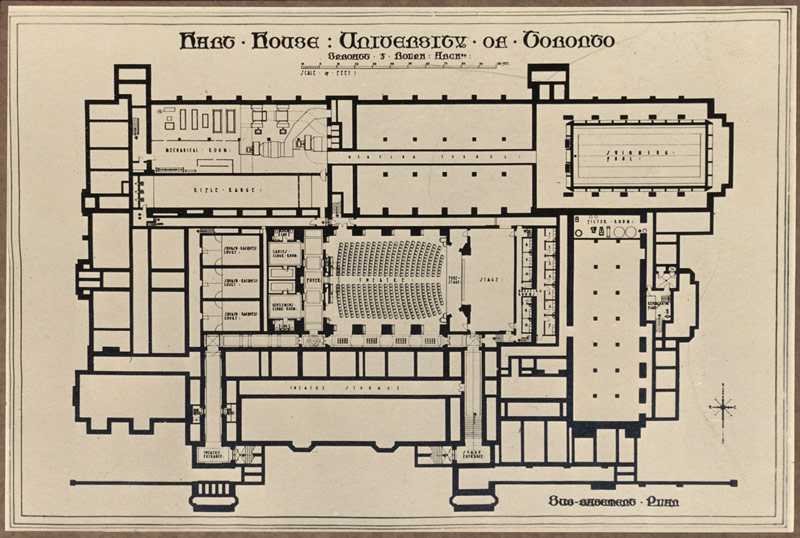
Click to see a larger image
[Sub-basement plan for Hart House at the University of Toronto, showing the theatre and stage in the centre], [192-]
Sproatt and Rolph fonds
C 292-3
Archives of Ontario, I0074060
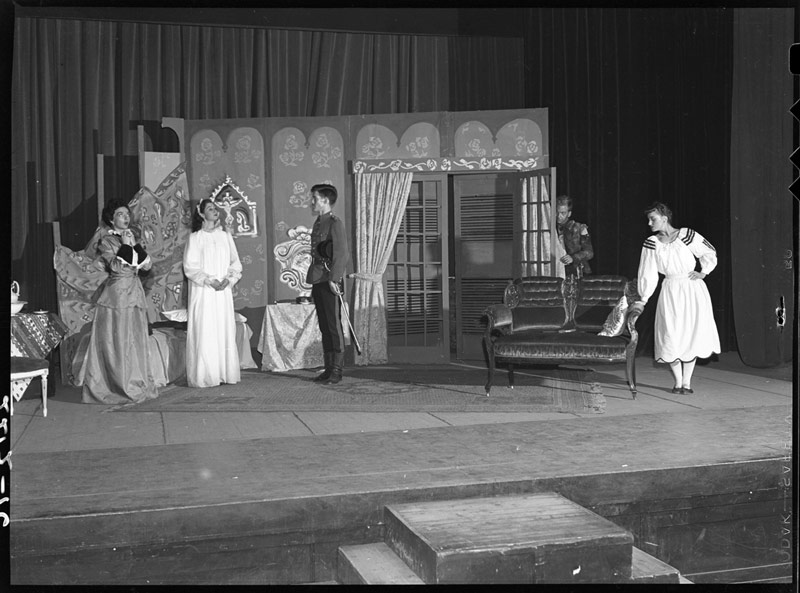
Click to see a larger image
Actors performing at Hart House Theatre, University of Toronto, December 4, 1946
Canada Pictures Limited fonds
F 4485-13, Creator Code 2242A
Archives of Ontario, I0055084
“Despite the popularity of the motion picture, more people to-day, thanks to the ‘Little Theatre’ movement, are playing in and witnessing dramatic pieces than ever before.”
|